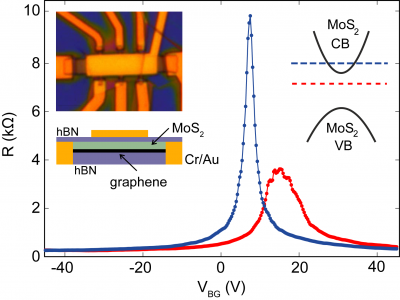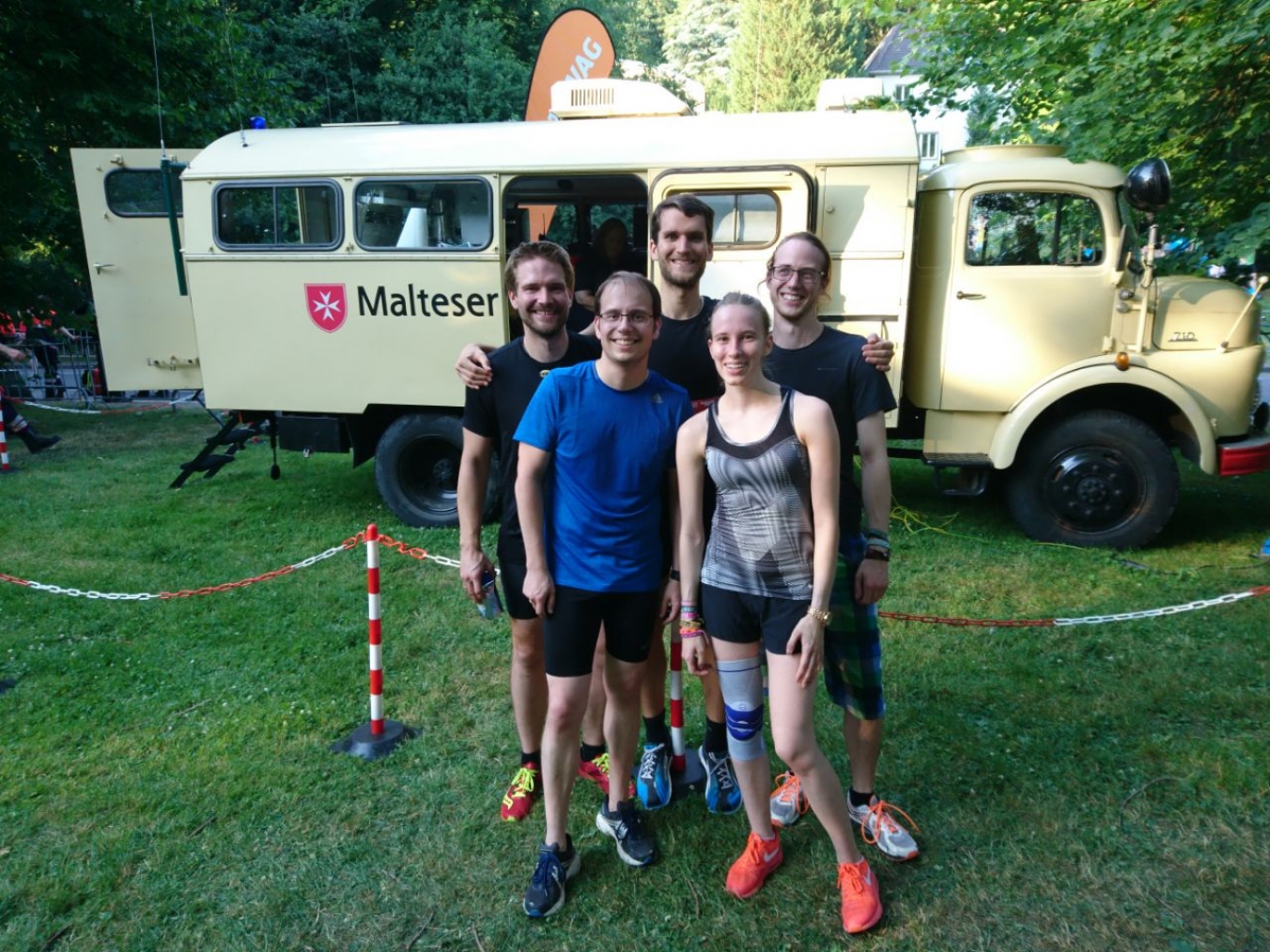Current events
Next talk tomorrow at 11:30 by Balint Szentpeteri!
News 05.07.2025
New publication: Electric-Field-Tunable Spin−Orbit Gap in a Bilayer Graphene/WSe2 Quantum Dot
Site Content:
21.07.2017
New publication: Dry transfer of CVD graphene using MoS2-based stamps

Phys. Status Solidi RRL 11, 1700136(2017) Recently, a contamination-free dry transfer method for graphene grown by chemical vapor deposition (CVD) has been reported that allows to directly pick-up graphene from the copper growth substrate using a flake of hexagonal boron nitride (hBN), resulting in ultrahigh charge carrier mobility and low overall doping. Here, we report that not only hBN, but also flakes of molybdenum disulfide (MoS2) can be used to dry transfer graphene. This, on one hand, allows for the fabrication of complex van-der-Waals heterostructures using CVD graphene combined with different two-dimensional materials and, on the other hand, can be a route toward a scalable dry transfer of CVD graphene. The resulting heterostructures are studied using low temperature transport measurements revealing a strong charge carrier density dependence of the carrier mobilities (up to values of 12,000 cm2/(Vs)) and the residual charge carrier density fluctuations near the charge neutrality point when changing the carrier density in the MoS2 by applying a top gate voltage.

05.07.2017
“Lousberglauf” 2017
The participation of our Institute at the “Lousberglauf” 2017 was once again. Despite the suffocating heat, Michael (21:29), Isabell (29:46), Marc (23:25), Markus (23:41) and Alex (25.09) had a lot of fun and improved their performance compared to last year. Congratulations!


03.07.2017
JARA-Day 2017 -- Celebration of 10 years JARA
We actively contributed to the celebration of 10 years JARA. For more details see e.g. (both in german): Aachener Zeitung or "Pressemitteilungen" at Jara.org

28.06.2017
New publication: High mobility dry-transferred CVD bilayer graphene

Appl. Phys. Lett. 110, 263110 (2017) We report on the fabrication and characterization of high-quality chemical vapor-deposited (CVD) bilayer graphene (BLG). In particular, we demonstrate that CVD-grown BLG can mechanically be detached from the copper foil by an hexagonal boron nitride (hBN) crystal after oxidation of the copper-to-BLG interface. Confocal Raman spectroscopy reveals an AB-stacking order of the BLG crystals and a high structural quality. From transport measurements on fully encapsulated hBN/BLG/hBN Hall bar devices we extract charge carrier mobilities up to 180,000 cm2/(Vs) at 2 K and up to 40,000 cm2/(Vs) at 300 K, outperforming state- of-the-art CVD bilayer graphene devices. Moreover, we show an on-off ratio of more than 10,000 and a band gap opening with values of up to 15 meV for a displacement field of 0.2 V/nm in such CVD grown BLG.

10.06.2017
New publication: A two-dimensional Dirac fermion microscope

Nature Communications 8, 15783 (2017) The electron microscope has been a powerful, highly versatile workhorse in the fields of material and surface science, micro and nanotechnology, biology and geology, for nearly 80 years. The advent of two-dimensional materials opens new possibilities for realizing an analogy to electron microscopy in the solid state. Here we provide a perspective view on how a two-dimensional (2D) Dirac fermion-based microscope can be realistically implemented and operated, using graphene as a vacuum chamber for ballistic electrons. We use semiclassical simulations to propose concrete architectures and design rules of 2D electron guns, deflectors, tunable lenses and various detectors. The simulations show how simple objects can be imaged with well-controlled and collimated in-plane beams consisting of relativistic charge carriers. Finally, we discuss the potential of such microscopes for investigating edges, terminations and defects, as well as interfaces, including external nanoscale structures such as adsorbed molecules, nanoparticles or quantum dots.

07.06.2017
New publication: Inter-valley dark trion states with spin lifetimes of 150 ns in WSe2

Phys. Rev. B 95, 235408 (2017) We demonstrate long trion spin lifetimes in a WSe2 monolayer of up to 150ns at 5K. Applying a transverse magnetic field in time-resolved Kerr-rotation measurements reveals a complex composition of the spin signal of up to four distinct components. The Kerr-rotation signal can be well described by a model which includes inhomogeneous spin dephasing and by setting the trion spin lifetimes to the measured excitonic recombination times extracted from time-resolved reflectivity measurements. We observe a continuous shift of the Kerr resonance with the probe energy, which can be explained by an adsorbate-induced, inhomogeneous potential landscape of the WSe2 flake. A further indication of extrinsic effects on the spin dynamics is given by a change of both the trion spin lifetime and the distribution of g factors over laboratory time. Finally, we detect a Kerr-rotation signal from the trion's higher-energy triplet state when the lower-energy singlet state is optically pumped by circularly polarized light. We explain this by the formation of dark trion states, which are also responsible for the observed long trion spin lifetimes.

02.06.2017
1st “RWTH Campuslauf”

A team from the 2nd Institute of physics participated at 1st “RWTH Campuslauf”. Arne Hollmann, Thomas Descamps, Katarina Menne and Michael Schmitz made a fantastic second place in the relay 4 x 2,3 km. Congratulations!

10.05.2017
phyphox in "Physik in unserer Zeit"
We have published an article in the (German) "Physik in unserer Zeit" presenting our app phyphox with an emphasis on its abilities for remotely controlled smartphone experiments. This is presented using the example of tracking the speed of a wheel rolling down a hill. Physik in unserer Zeit 48, 148-149 (2017)


